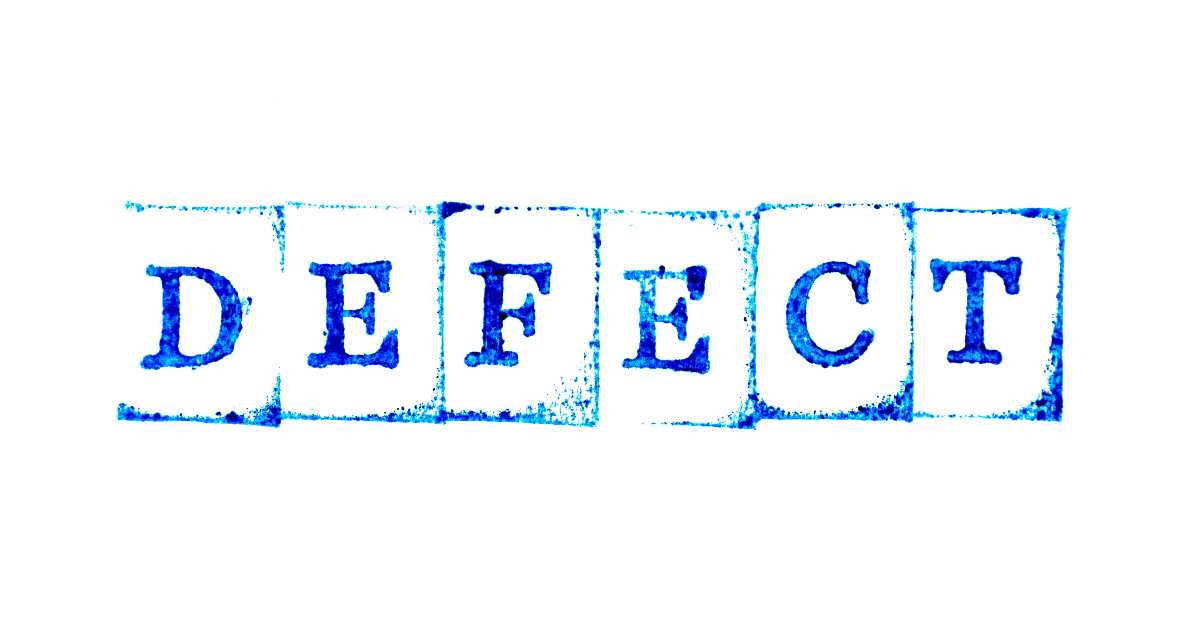Someone on Linkedin wrote about the distinction between these 2 terms:
- Defect
- Defective
I actually see a lot of confusion around them.
What does the standard say?
ISO 2859-1 includes these definitions:
Defect: non-fulfilment of an intended usage requirement
Nonconformity: non-fulfilment of a specified requirement
(Note: In some situations specified requirements coincide with customer usage requirements)
Nonconforming item: item with one or more nonconformities
In ISO 2859-1 speak, an ‘item’ (or ‘product’) can have 1 or several defects + 1 or several nonconformities, and that makes it a nonconforming item.
It means the number of nonconforming items (whether the issue is non-compliance to a requirement or prevention of customer usage) is compared to the AQL limits to determine if the lot is passed or failed.
What do practitioners usually say?
In everyday life, things are usually simplified.
When a product is dangerous, cannot satisfy a customer, or may cause some other issue, it is defective.
All types of issues are called a defect. Then, they can all be added up and compared to the AQL limits.
It is actually often over-simplified, for two reasons:
- In our QA department, we don’t count everything as a defect. A checkpoint may be failed and may trigger the failure of the whole inspection, without the need to compare with AQL limits. See Defect List vs. Checkpoint List.
- Only issues that are checked on all inspection samples may be counted as defects. And that happens often. See Why some Points are NOT Checked on All Samples.
Minimizing legal risks
In some sectors of industry, those words are banned.
Al Smith, who worked for several tyre manufacturers, commented:
My advice is to us the term ‘anomaly’ for [‘defect’ and ‘defective’].
If you are facing a legal situation, the use of the terms [verbal or written] defect or defective will assure that a jury, etc. will deem the use of these terms as an admission of fault.
If you use the term ‘anomaly’ it allows you to focus / communicate the actual root cause of a failure in those cases where an action, outside of the company’s control, caused the issue or if a legit repair or rework was accomplished you can go into the reason the repaired or reworked anomaly was not the root cause of the issue.
If during legal discovery your document shows the subject item was listed as a ‘defect’ or ‘defective’ you can be assured these terms will come up at trial and most, if not all, of those that serve on a jury will usually be convinced the company has liability once they hear these words.
If you make airbags, brake systems, tyres, and other products that may be a cause of death, I’d suggest you pay close attention to this advice!
Even ISO 2859-1 suggests to keep the use of “defect” limited:
Since the term “defect” now has definite meaning within the law, it should not be used as a general term.
What about quality issues before mass production starts?
MIL-STD 785B, which was issued in 1980 but is still one of the best standards on the topic of reliability, usually mentions “design deficiencies” and “weak parts”, by contrast with “workmanship defects”.
In Why Design Defects Are Behind Many Quality/Safety Issues, I used the term “design defect” to designate quality issues that are caused in good part or in whole by design choices. For instance:
- A design that includes serious weaknesses might lead to issues after months/years of use.
- A design that has little margin of safety might lead to defects in production appearing only some of the times (while the engineering specs are respected, while it is the same process same equipment same operator…).
For common processes, the most common types of defects are well known and can often be predicted at the design stage – see typical injection molding defects for example. Waiting for the trial shots to worry about these issues (and not conducting a DFM review) is the sign of an incompetent mechanical engineer.
In summary:
- 1 defective product might count 1 or more defects.
- Counting defects is not the only way to fail a QC inspection.
- You might want to use other terms if there is a chance a court of law examines your operations and looks for the reason for a safety accident.
Get expert help to improve YOUR product quality from suppliers in China or Vietnam. Read: Quality Assurance In China Or Vietnam For Beginners
Grab your free copy of this eBook and learn the common traps new importers from China or Vietnam fall into, and how to avoid or overcome them in order to get the best possible production results. It also outlines a proven quality assurance strategy that you can follow in order to have better control over your product quality, covering:
- Finding Suitable Suppliers
- Defining your Requirements before Production Starts
- Don’t Skip the New Product Introduction Process
- Regular Quality Inspections (Trust but Verify)
- Tying Payments to Quality Approvals
Sounds good? Hit the button below to get your copy now:


